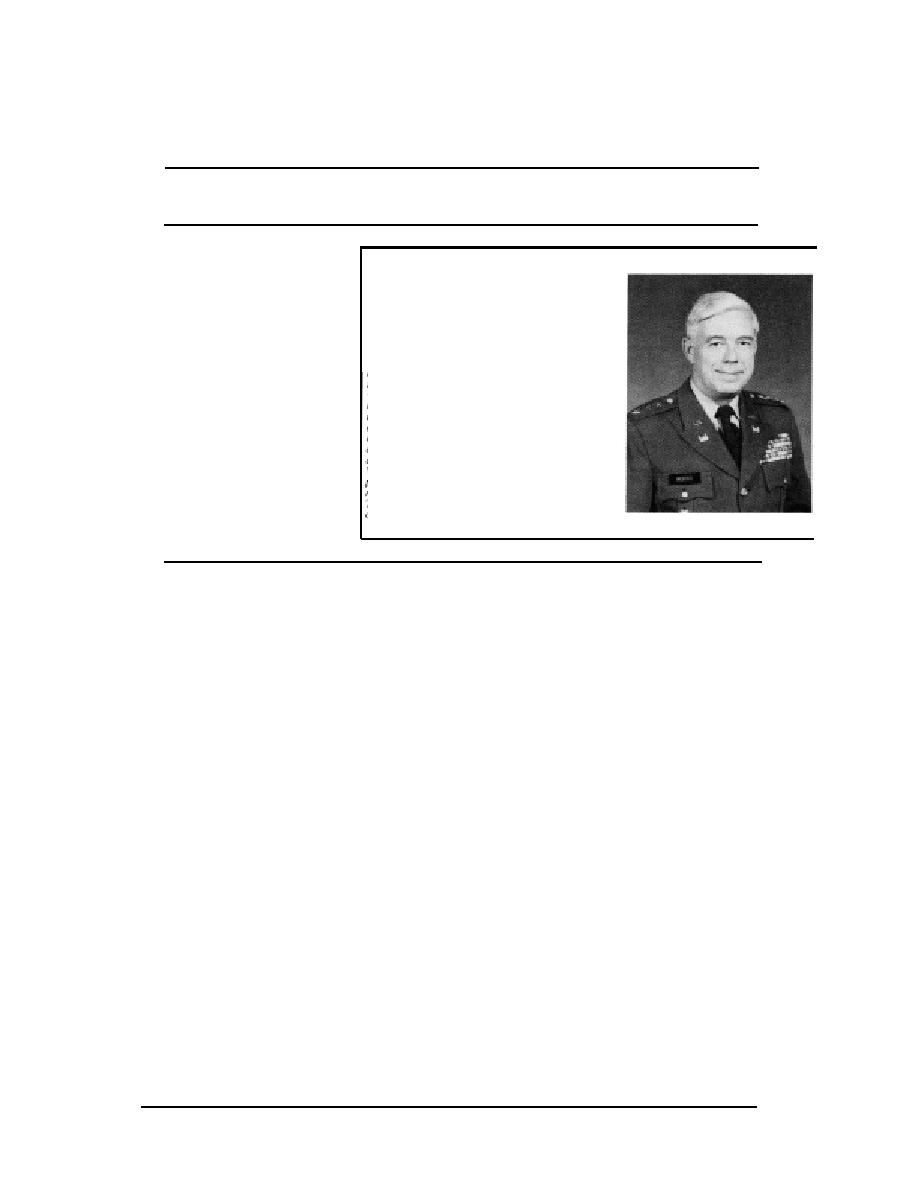
"To be prepared for war is the most effectual means of preserving the peace."
George Washington
Maintaining
In a future war, the United States probably will
not be afforded a lengthy mobilization period As a
result, the peacetime Army must be ready to assume
a wartime posture quickly and effectively. The Army
Engineer
Corps of Engineers has a vital role in maintaining
the national strength in war or peace This includes
the traditional combat engineering and construc-
tion support provided to the Army by Engineer troop
units. It also includes a lesser known, but none-
Readiness
theless important, element-maintaining a nation-
wide construction organization that con be rapidly
mobilized to support a war effort. During peace-
t
ime, much of the Corps' effort is devoted to the
civil works program, In war, this engineering and
construction capability con be quickly and effi-
ciently shifted to military projects, as was clearly
demonstrated during World War II and the Korean
By Lt. Gen. J.W. Morris
War. Officers who had served in the civil works
Chief of Engineers, United States Army
program were well prepared to assume the complex
responsibilities of supporting a large Army in war.
Today, the Corps is dedicated to ensuring the
continuation of this unique mobilization capability.
Lt. Gen. John W. Morris
T
"It has performed these heavy tasks with its usual effi-
HROUGHOUT most of its history, the Corps has
been active in civil works construction. This mission
ciency and thoroughness."
led to the establishment of a highly decentralized, na-
tionwide organization capable of performing large-scale
Mission expanded
construction projects. By 1939, the field organization
The total military construction mission was reas-
of the Corps had grown to 11 Divisions with 46 Dis-
signed from the Quartermaster Corps to the Corps of
tricts, staffed by 225 officers and 49,000 civilians. The
Engineers on December 16, 1941. The consolidation of
primary missions were execution of the civil works
the Quartermaster's Construction Division and the
program and the construction of fortifications in the
Corps of Engineers brought together nearly 600,000
United States. The Corps also had the wartime func-
people, including contractor personnel, who formed
tion of military engineering and construction in the-
probably the world's largest construction organization.
aters of operation.
The Corps was quickly involved in a massive con-
After the war began in Europe, the military construc-
struction program to support the war effort. In the sev-
tion program increased greatly. The Quartermaster
en months following Pearl Harbor, Congress appropri-
Corps, the agency responsible for military construc-
ated over billion in construction funds. The civil
tion in the United States, was handicapped in its abili-
works structure was quickly adapted to absorb this
ty to expand with this program because its field organi-
newly acquired workload. Division and District bound-
zation and experience in large-scale construction were
aries were redrawn and headquarters relocated to ac-
limited. Meanwhile, Congressional appropriations for
commodate changing requirements. New Districts
civil works projects were lessening as preparations for
were created and old ones abolished as dictated by the
war assumed greater importance. To alleviate some of
volume and location of work. Prewar strength of
the pressure on the Quartermaster and to take advan-
49,000 was expanded to 185,000 by mid-1942. On the
tage of the existing Engineer capabilities of a skilled
first anniversary of the bombing of Pearl Harbor, the
work force and a nationwide organization, the Chief of
war construction program, authorized at over bil-
Staff of the Army assigned Army Air Corps construc-
lion, was 85 percent complete.
tion to the Corps of Engineers in November 1940.
The effect of this rapid expansion can be visualized
Within two weeks, the Corps began taking over proj-
by examining a typical District. In December 1940, the
ects already under way and by April 1941 had assumed
Tulsa District had 499 people engaged in civil works
0 million in Air Corps construction. A year after
the transfer, the Engineers had put in place 6 mil-
programs. With the assignment of several Air Corps
projects, the District grew to 800 people in six months.
lion in construction. The Corps' outstanding perform-
Growth increased significantly after Pearl Harbor, and
ance led Secretary of War Henry L. Stimson to write:
Reprinted from THE MILITARY ENGINEER for January-February 1977
Copyright by The Society of American Military Engineers
C-l



 Previous Page
Previous Page
